
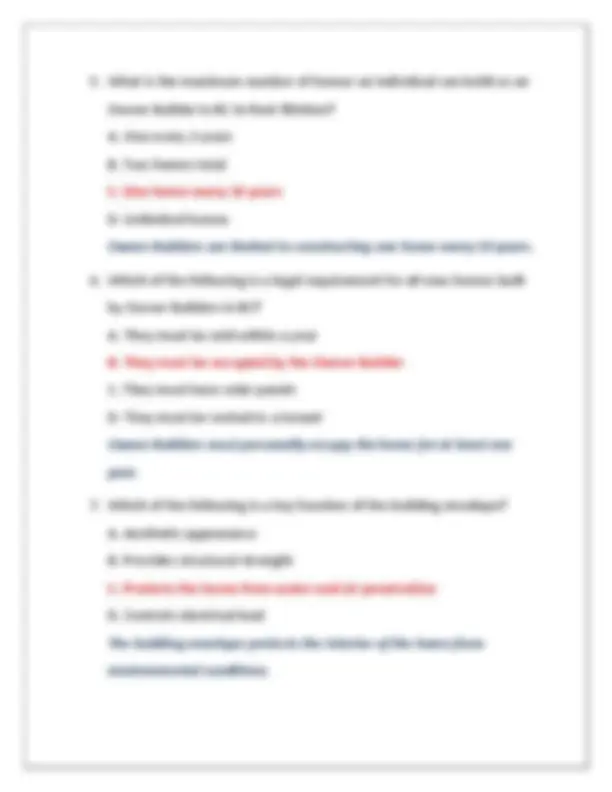
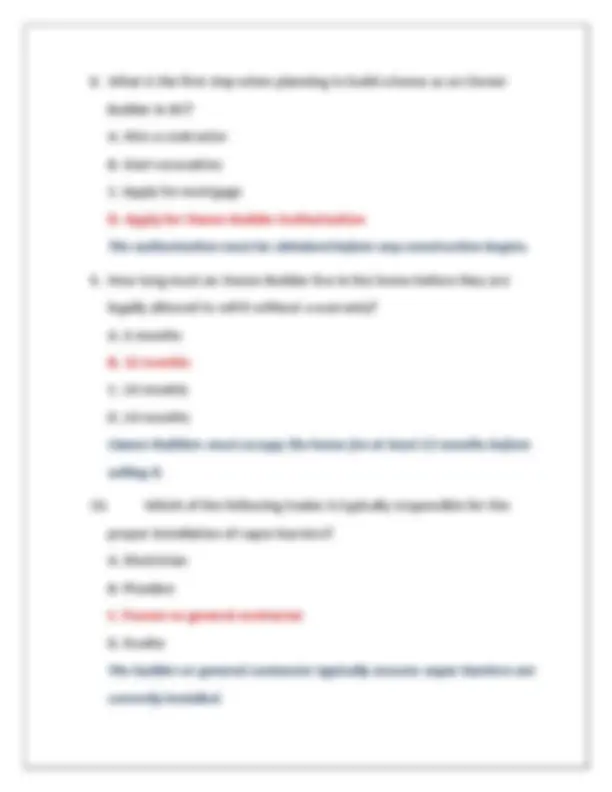
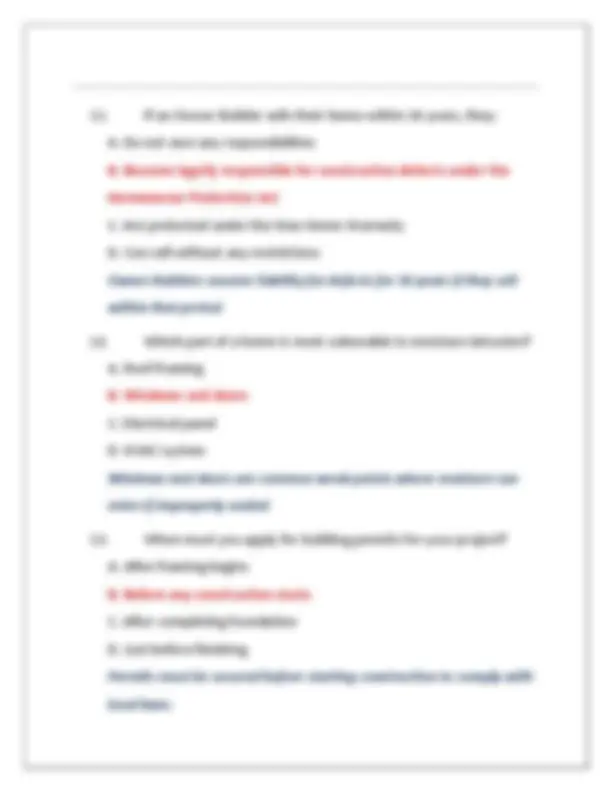
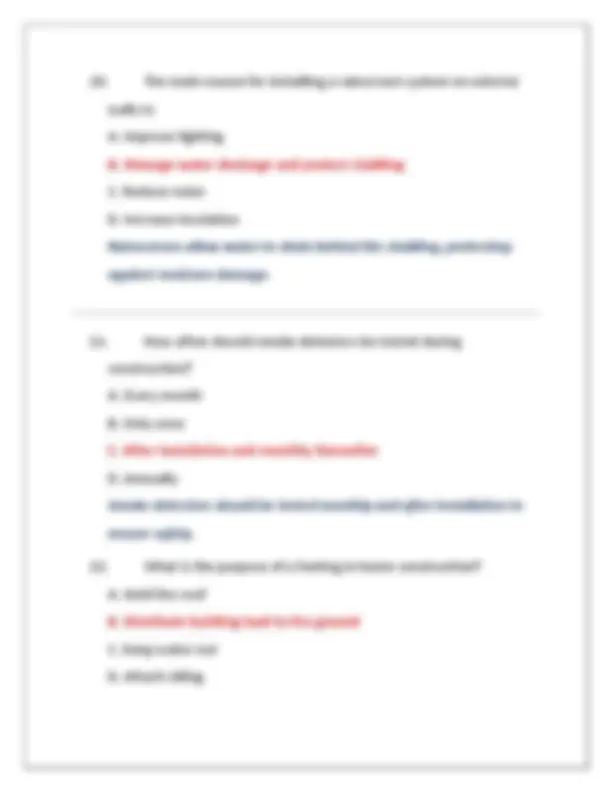
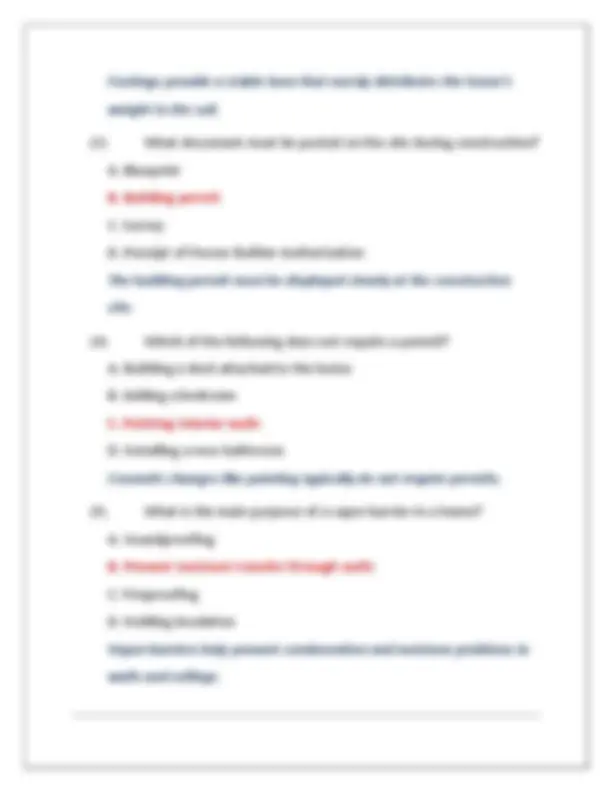
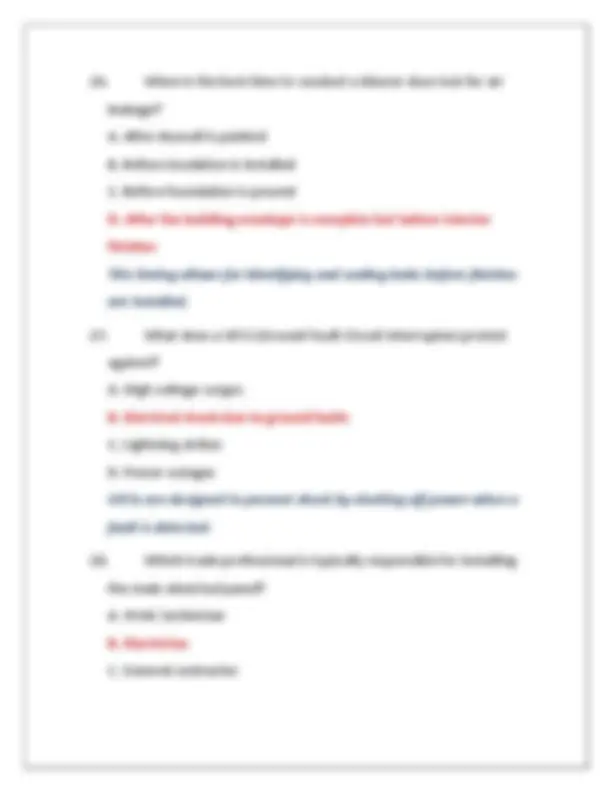
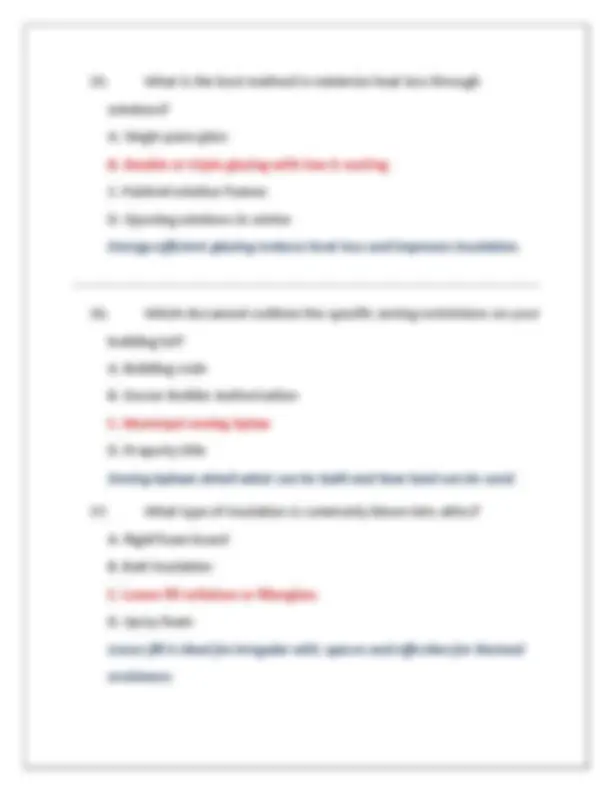
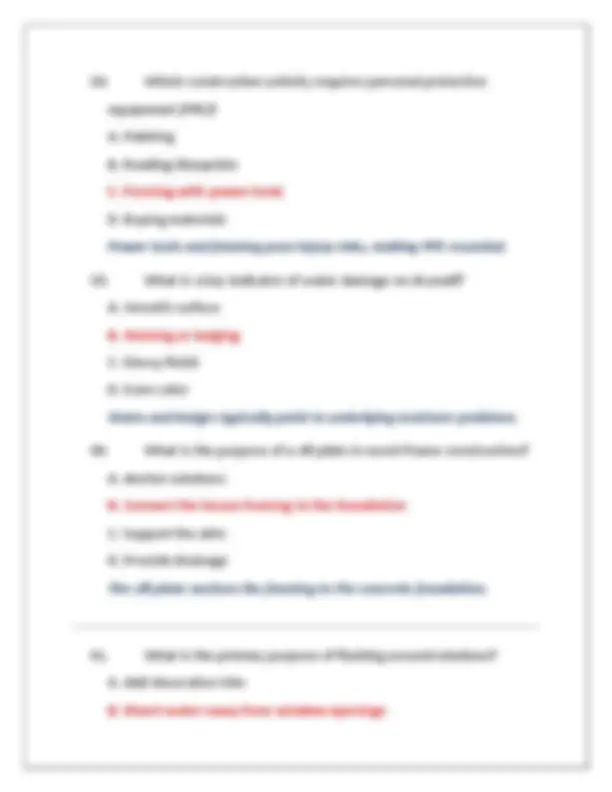
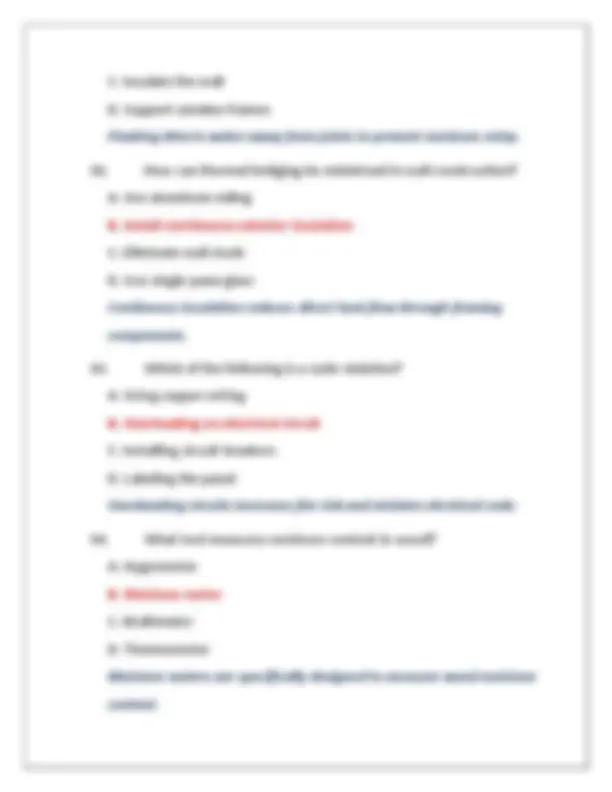
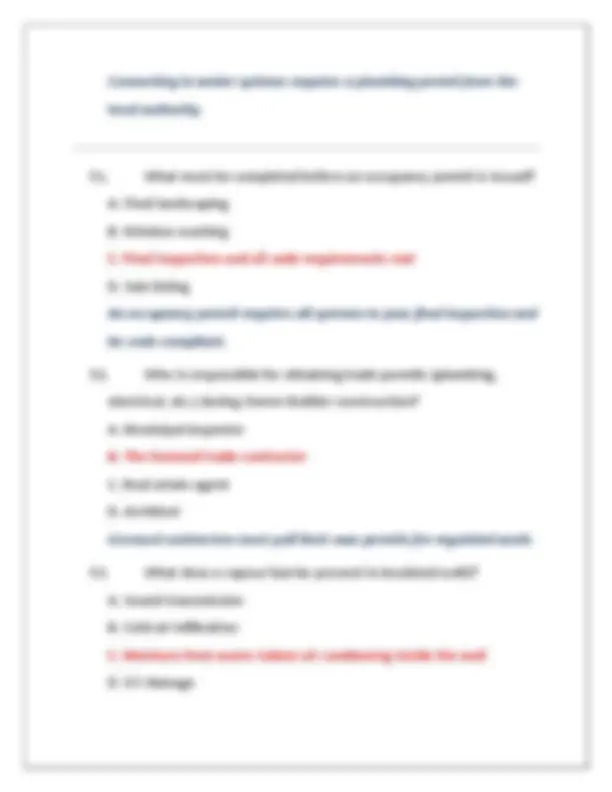
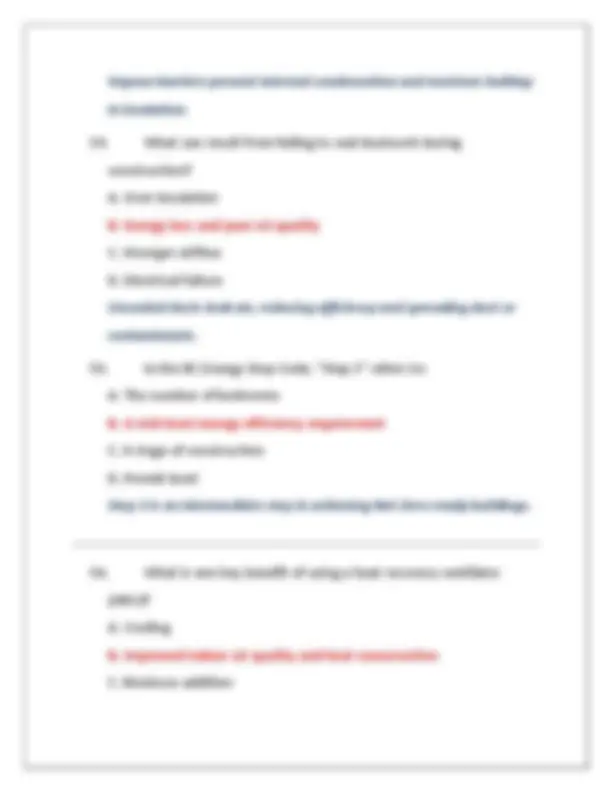
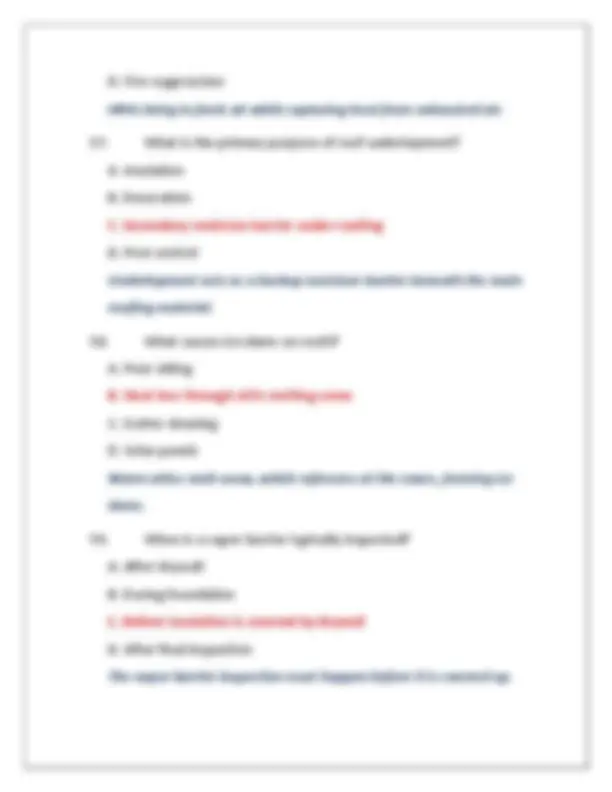
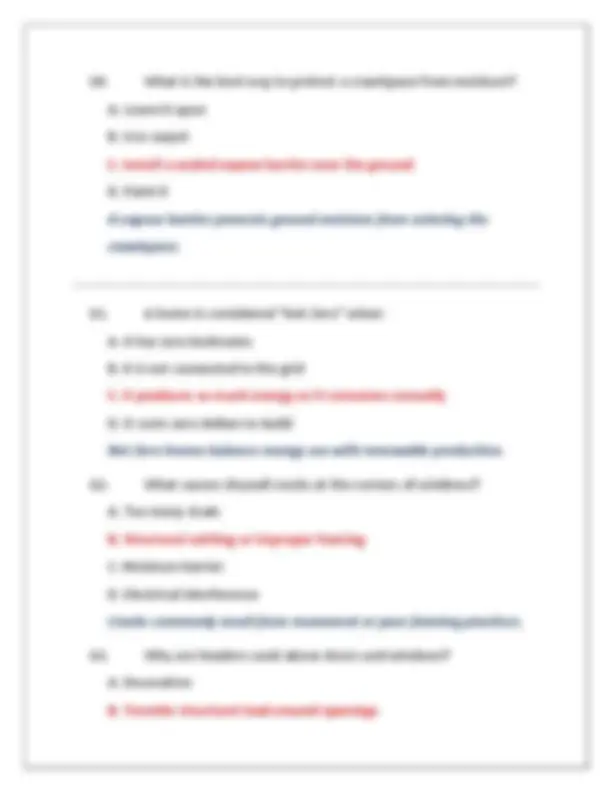
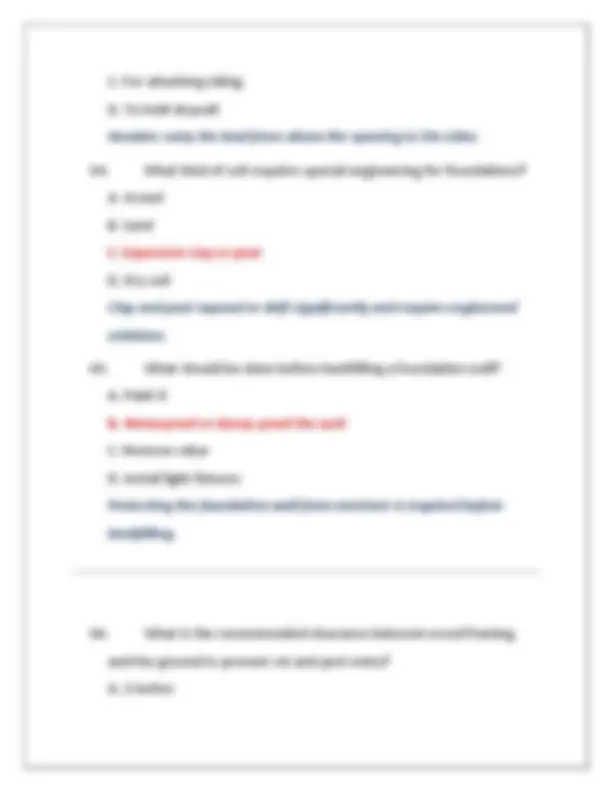
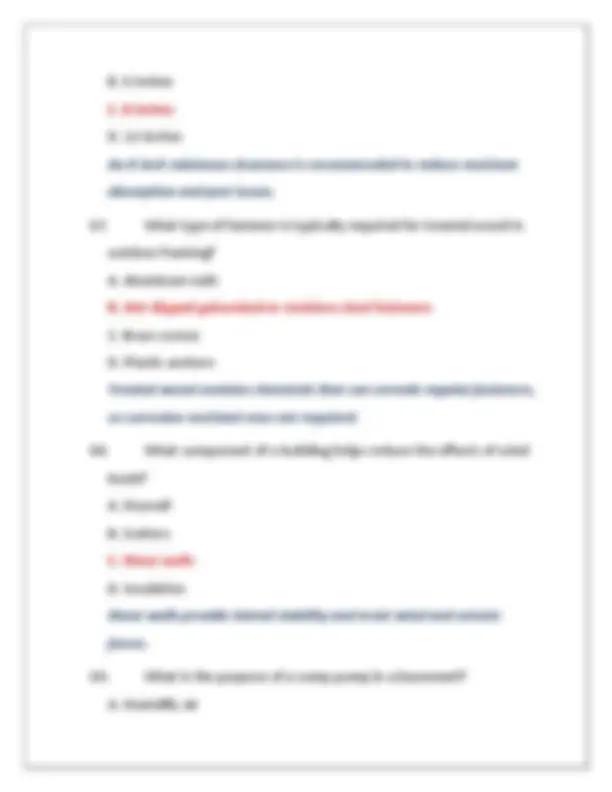
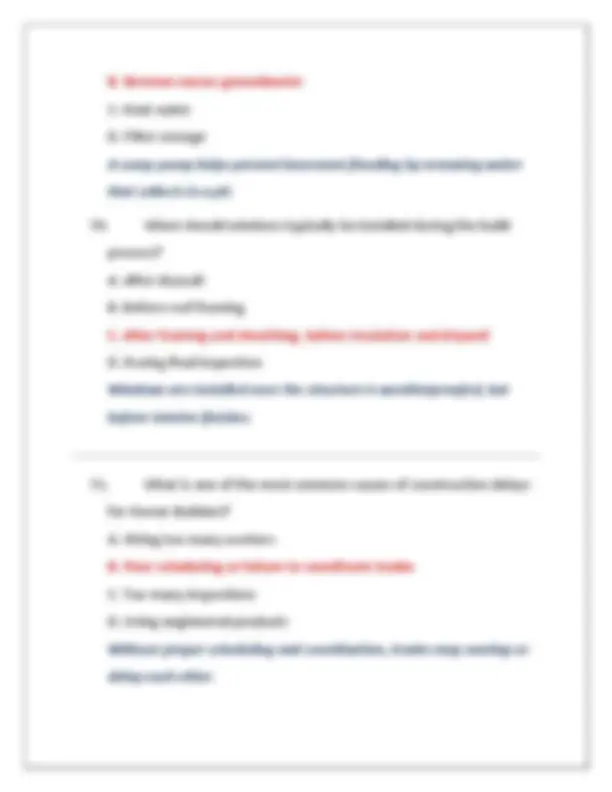
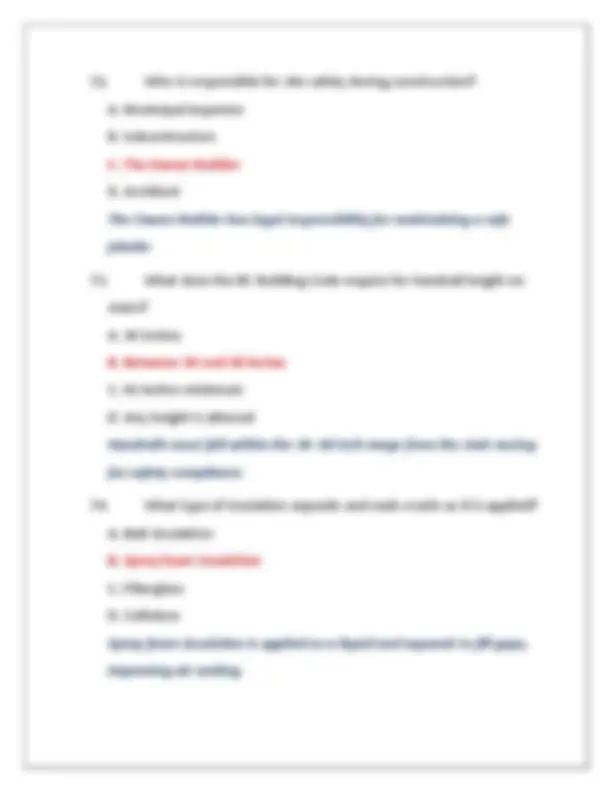
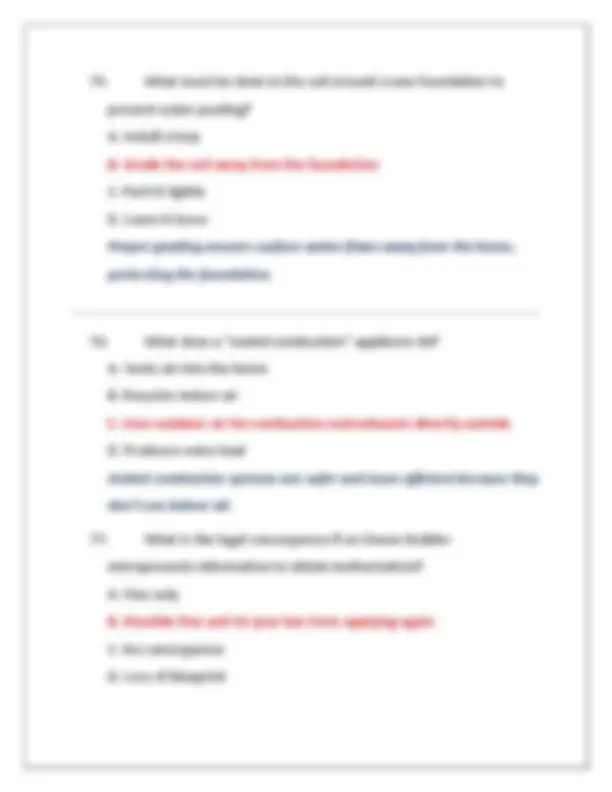
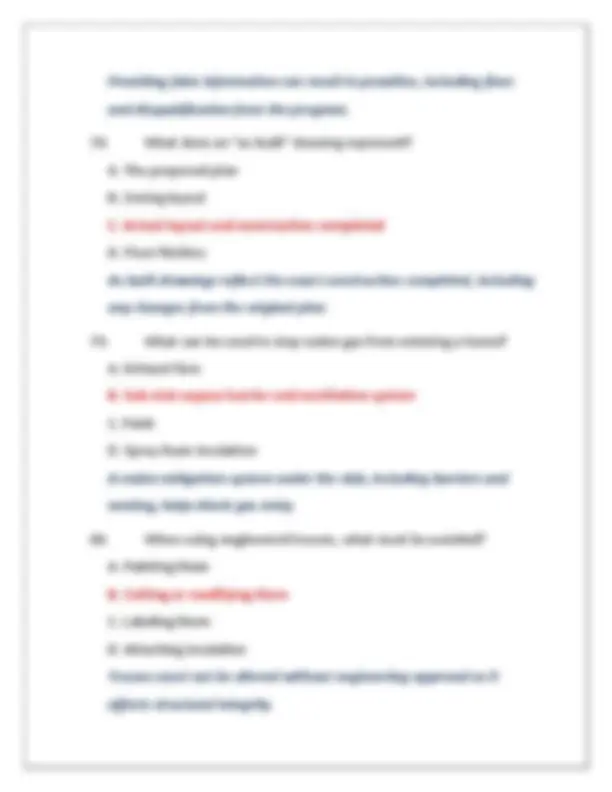
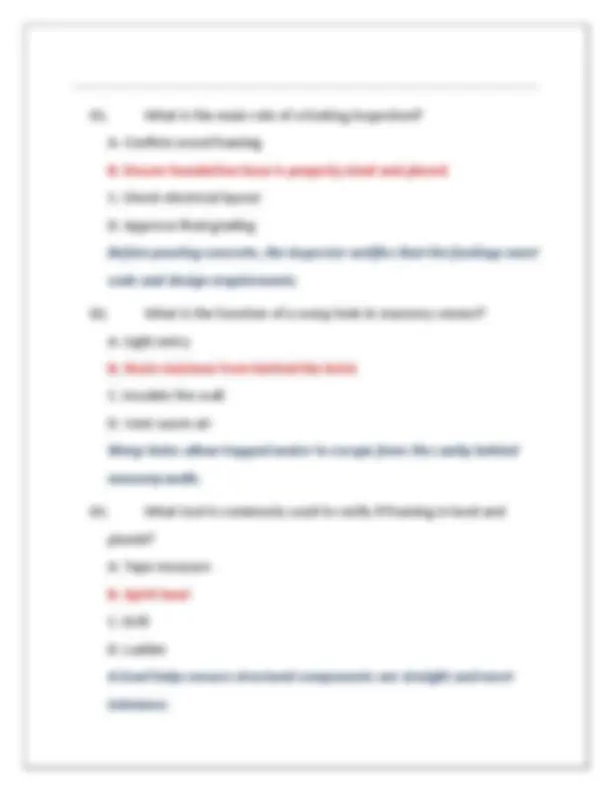
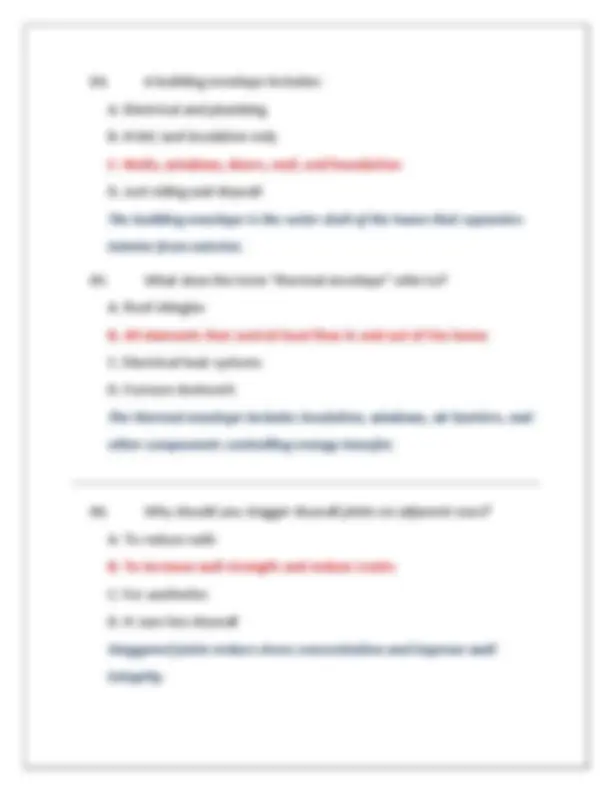
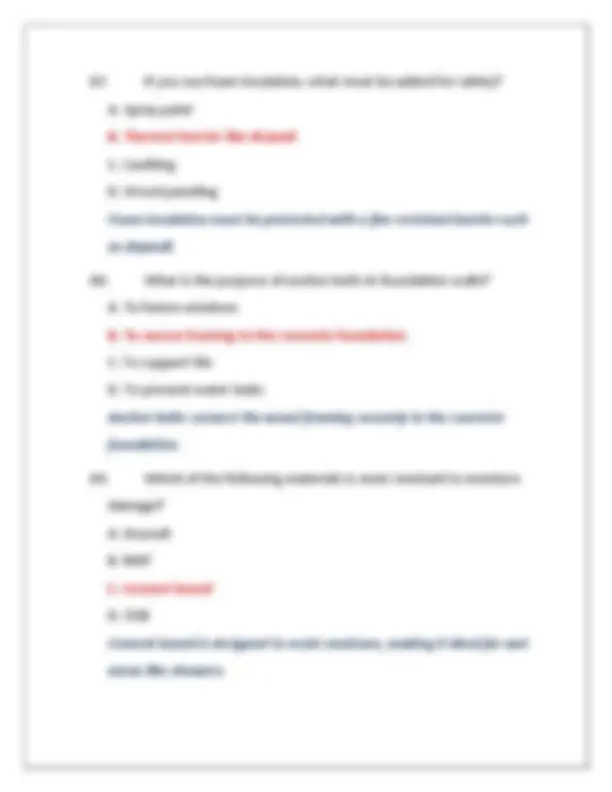
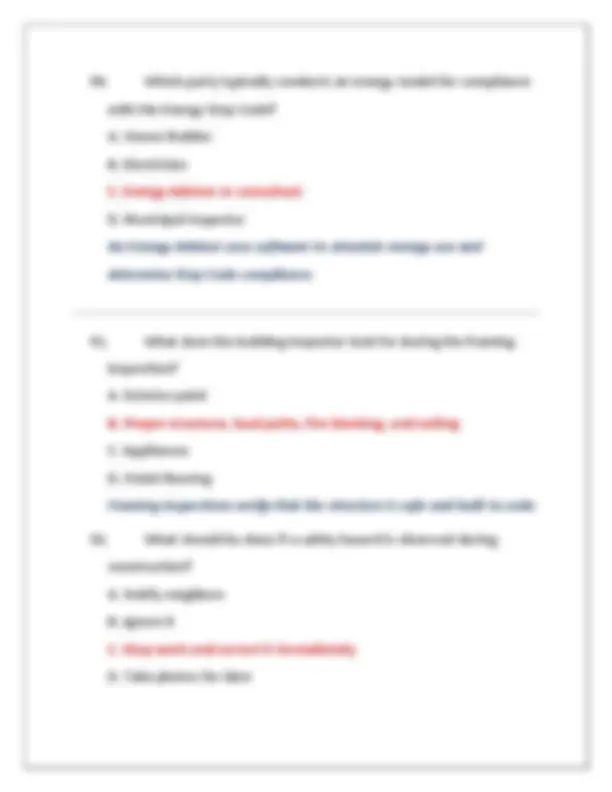
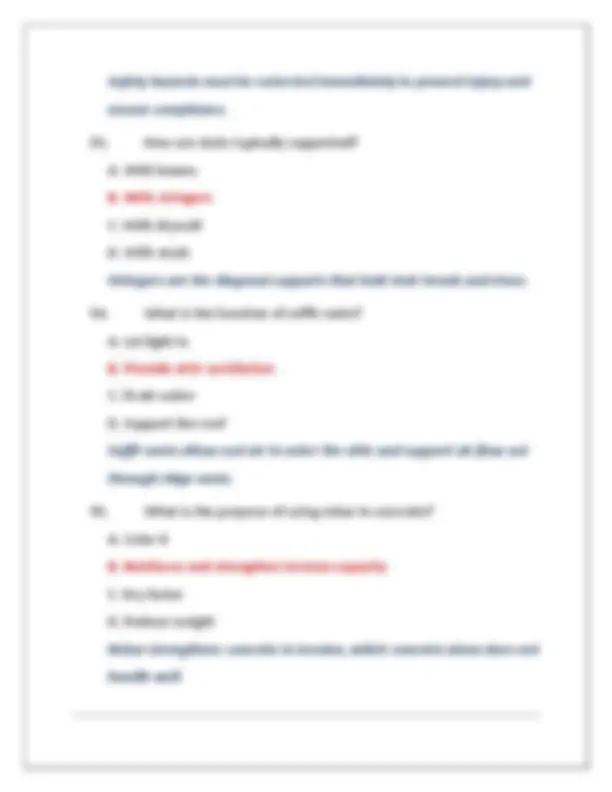
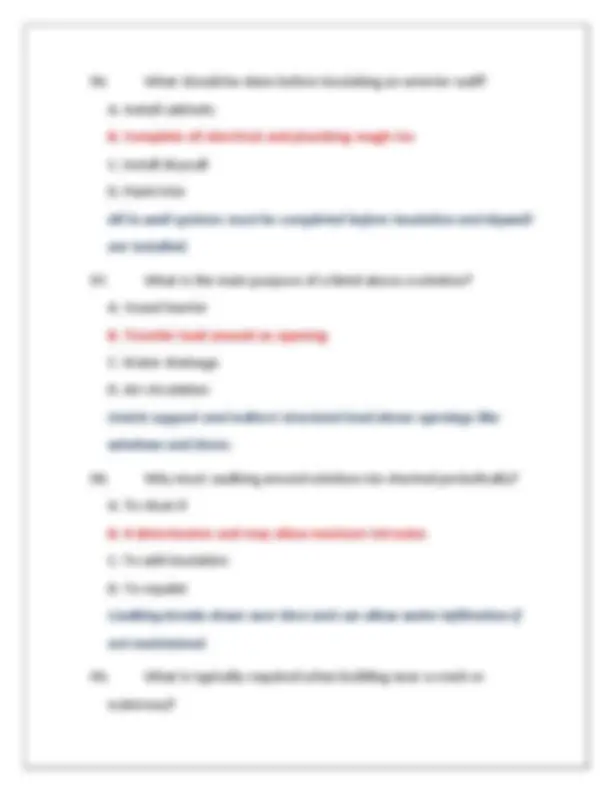
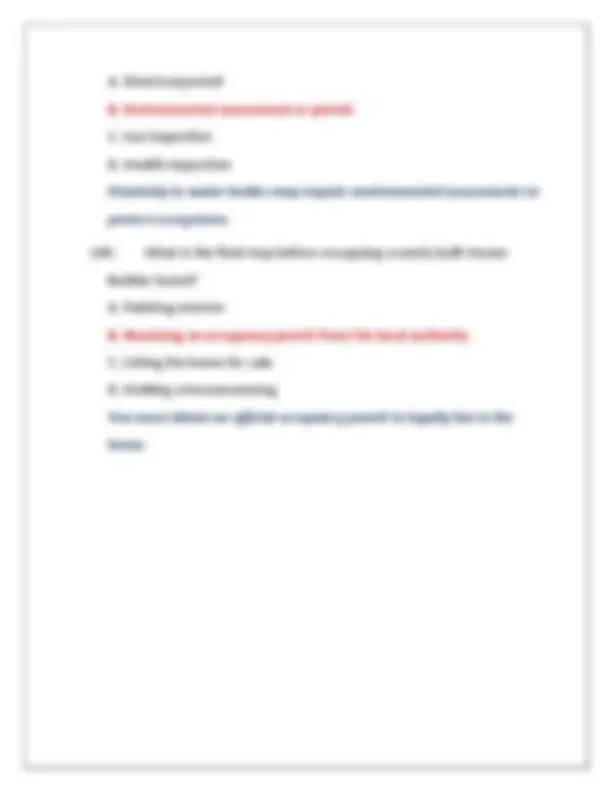


Study with the several resources on Docsity

Earn points by helping other students or get them with a premium plan


Prepare for your exams
Study with the several resources on Docsity

Earn points to download
Earn points by helping other students or get them with a premium plan
Community
Ask the community for help and clear up your study doubts
Discover the best universities in your country according to Docsity users
Free resources
Download our free guides on studying techniques, anxiety management strategies, and thesis advice from Docsity tutors
British Columbia BC Owner Builder Authorization Exam 1 Practice Questions And Correct Answers (Verified Answers) Plus Rationales 2025 Q&A | Instant Download PDF
Typology: Exams
1 / 34

This page cannot be seen from the preview
Don't miss anything!



























D. Plumber Electricians handle electrical service and panel installation.
Vapour barriers prevent internal condensation and moisture buildup in insulation.
D. Fire suppression HRVs bring in fresh air while capturing heat from exhausted air.